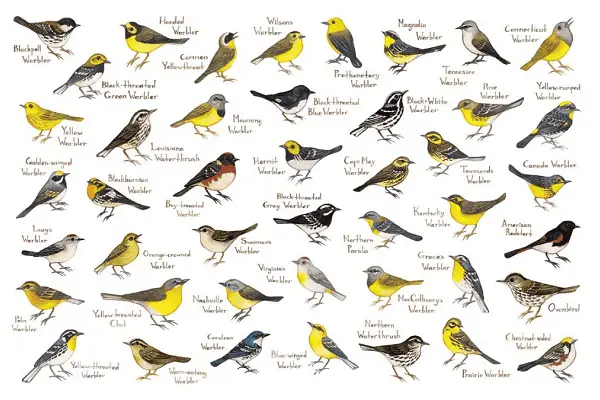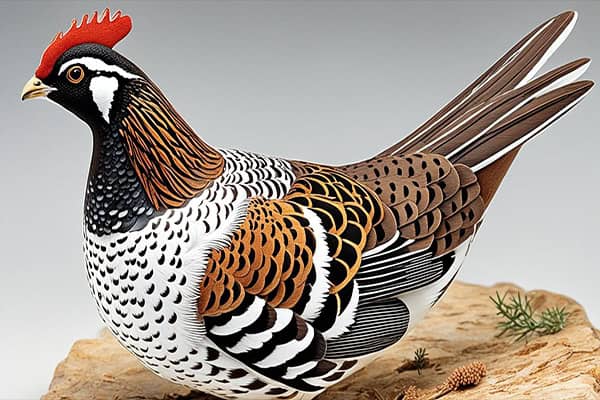Discover List Of Scientific Bird Names (With Pictures)
Exploring Scientific Bird Names led me to forests and beyond, where each name unfolds a story, revealing secrets of their evolution. These names are not mere labels; they’re a nod to history and nature’s marvels, helping us distinguish and honor these winged wonders.
Here we’ll learn the Scientific Bird Name in the world
Scientific Bird Names Taxonomy
Binomial Nomenclature

The system for naming birds scientifically is called binomial nomenclature. It was created by Carl Linnaeus in the 18th century. This system uses two names: the first is the genus, which is the group that the bird belongs to, and the second is the species, which identifies the individual type of bird. This way of naming birds helps scientists and bird watchers all over the world to talk about birds clearly and without confusion.
Hierarchical Classification
The scientific names of birds are part of a structured system that organizes them according to their physical and genetic similarities. This system, known as taxonomic classification, arranges birds into groups that reflect their evolutionary history. The main levels of this system, starting from the broadest category and moving to the most specific, are:
- Kingdom
- Phylum
- Class
- Order
- Family
- Genus
- Species
At each level, birds are classified with others that they share more characteristics with. For example, at the species level, birds are very similar to each other, while at the kingdom level, they are just grouped as general life forms. This system helps scientists understand how different birds are related and how they have evolved over time.
The Importance of Latin in Bird Scientific Names
A Universal Language
That’s correct! Latin is used for scientific names because it doesn’t change anymore, which means the names stay the same over time. This is really important in science, especially in taxonomy, which is the science of naming and classifying living things. Using Latin helps scientists from all over the world understand each other when they talk about different species of birds and other organisms.
Descriptive and Diagnostic Traits
Scientific names are not just random words; they tell us something about the bird. Here are the examples you mentioned, explained a bit more:
- Strix varia (Barred Owl): “Strix” is the Latin word for owl, and “Varia” means varied or various, which refers to the owl’s striped or barred feathers.
- Charadrius vociferus (Killdeer): “Charadrius” is a type of small to medium-sized bird known as plover, and “vociferus” comes from Latin, meaning calling loudly, which fits the Killdeer because it’s known for its noisy call.
These names help scientists and birdwatchers talk about birds and understand their features or behaviors just by knowing their names. It’s like each name is a mini-description of the bird!
The Origins of Bird Scientific Names
Discoverers and Explorers
Yes, that’s true. Many birds are named after the ornithologists, naturalists, and explorers who first studied them. This is a way to honor their hard work and important discoveries. For example,
- Wilson’s Warbler is named after Alexander Wilson, who is considered one of the founders of American ornithology. It’s a tradition that connects the history of science with the living world of birds we see today.
Geographic References
Geographic locations are a common source of inspiration for bird names. When a bird species is found only in a certain area, its name often reflects that unique connection to its habitat. Also, This helps to emphasize the bird’s natural home and can be a reminder of the diverse ecosystems that exist around the world. For example,
- Galapagos Penguin’s name indicates its exclusive presence in the Galapagos Islands. Such names serve as a geographical signature, linking the species to its environment.
Check Our Previous Articles:
Bird Conservation Through Scientific Naming
Standardizing Conservation Efforts
Scientific bird names are essential in conservation. Also, They allow everyone, from researchers to conservationists, to speak the same language when it comes to identifying and discussing birds.
This is especially important for endangered species because it helps ensure that everyone is talking about the same bird when they plan how to protect it and its home. Standardized names make it easier to share information and work together to keep these birds safe.
Preventing Misidentification
Exactly, the use of scientific names for birds is a universal practice that eliminates confusion caused by the varying common names across different regions. This consistency is crucial for effective communication in bird conservation efforts, ensuring that everyone is referring to the same species, which is vital for tracking and protecting birds globally. It’s a system that unites the birdwatching and scientific communities in their shared passion and purpose.
Quirks and Curiosities: Scientific Bird Names
Tongue-twisting Delights
Scientific names for birds can be really long and tricky to say. They can be fun but also a bit confusing. Here are two examples:
- Chrysococcyx cupreus is another name for the African Emerald Cuckoo, a bird with shiny, green feathers.
- Lophotibis cristata is the White-winged Ibis, a bird with white feathers on its wings.
These names help scientists talk about birds in a way that’s the same all over the world.
Palindromic Pleasures
Bird names that read the same backward and forward are known as palindromes, which certainly add a playful element to ornithology. However, the example given,
- Phylloscopus schwarzi (Alpine Leaf Warbler), isn’t a palindrome. A true palindrome would be a name that reads exactly the same way in reverse, like “level” or “radar”.
Language Play
Ornithologists sometimes have a bit of fun with bird names by using wordplay or puns. The scientific name Cyanocitta cristata, which refers to the Blue Jay, is a good example.
- “Cyan” means blue in Greek, and “citta” is derived from the ancient Greek word for a type of bird.







